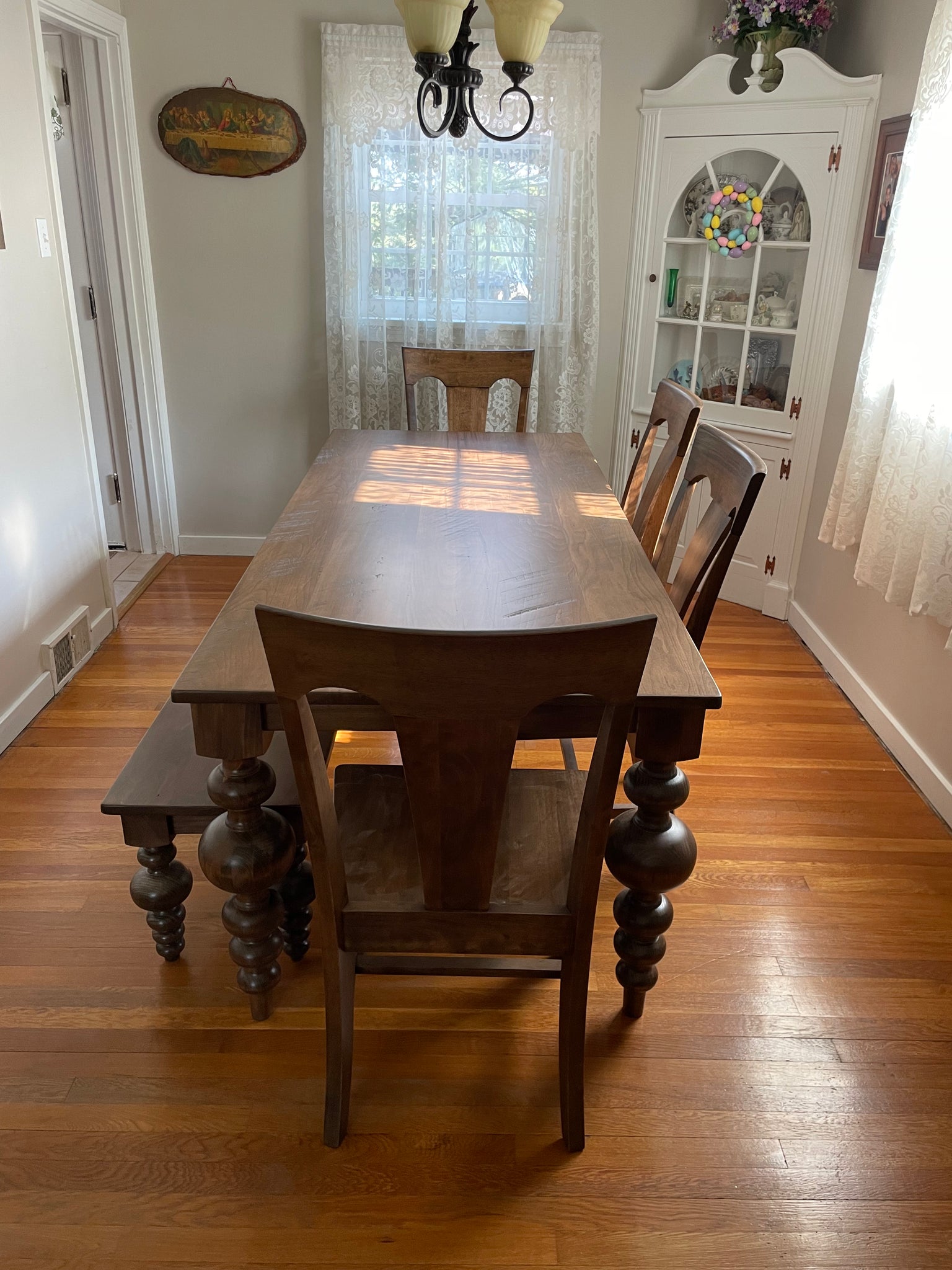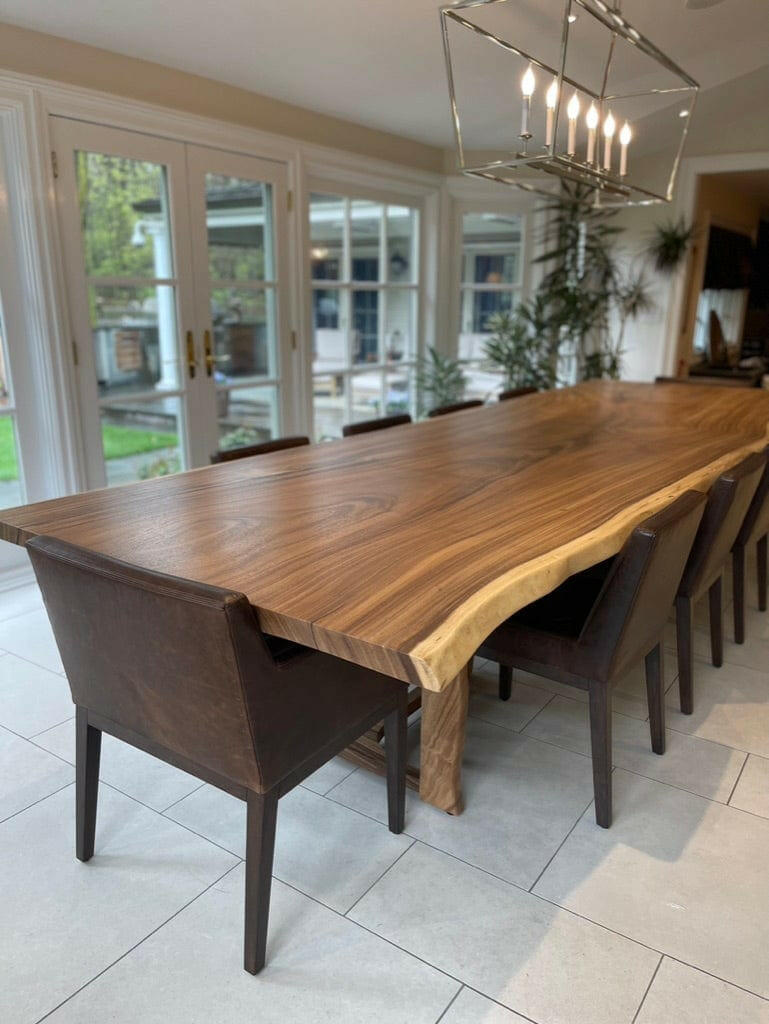Dining Room Table Legs That Integrate Functionality and Modern Layout
Dining Room Table Legs That Integrate Functionality and Modern Layout
Blog Article
A Thorough Consider Table Leg Styles: Discovering the Perfect Suit
Selecting the appropriate table leg style is crucial for both visual appeal and practical capability. Conventional 4 legs use timeless style and stability, while the stand base offers boosted legroom and a modern-day look. For those with bigger tables, trestle legs ensure strong support, whereas hairpin legs introduce a mid-century contemporary vibe with their minimal layout. The x-shaped legs mix modern design with boosted security. Each of these options brings special benefits, making the choice much more than just an issue of preference. Discover further to find which design completely enhances your eating area and lifestyle.
Standard 4 Legs
Among the different kinds of eating table leg designs, the traditional four-leg layout remains an ageless selection for several houses. Four legs offer well balanced support, making sure the table stays stable and capable of bearing substantial weight (dining room table legs).
From an aesthetic perspective, the standard four-leg style can be quickly adjusted to numerous interior styles. Whether crafted from timber, steel, or a mix of materials, these legs can be elaborately sculpted, streamlined and minimalistic, or anything in between. Their convenience permits them to complement both rustic and contemporary settings flawlessly.
Moreover, the simple framework of the four-leg layout promotes convenience of movement and positioning within an area. Unlike more complicated bases, this design minimizes obstructions, giving enough legroom for diners. In recap, the typical four-leg table leg design marries enduring style with useful performance, making it a sharp choice for those seeking both type and feature in their eating furniture.
Stand Base
Often commemorated for its sophisticated and space-efficient layout, the stand base is a distinguished option to the conventional four-leg configuration in table leg styles. This distinct base commonly includes a solitary central column supporting the table top, which can differ in form, from ornately sculpted timber to smooth, modern steel. One of the main benefits of the pedestal base is its capacity to make best use of legroom and seating flexibility. Without edge legs, restaurants are paid for better flexibility of movement, making it an optimal option for round and oblong tables that promote even more intimate and comprehensive gatherings.
Moreover, the stand base's main assistance can deal with significant weight, enabling using much heavier tabletops, such as marble or thick wood. This strength coupled with its visual versatility makes the pedestal base a preferred choice in both standard and contemporary indoor settings. It can seamlessly integrate with various style themes, from traditional elegance to minimal modernity. The central column itself provides a canvas for detailed styles and imaginative expressions, including a component of aesthetic passion beneath the table. In recap, the pedestal base integrates performance with style, making it a refined and practical choice for varied eating settings.
Trestle Legs
Trestle legs supply a robust and classic foundation for eating tables, defined by their horizontal cross-bracing and durable assistance beam of lights. Originating from middle ages times, this style has actually progressed yet preserved its crucial framework, making it a perennial fave in both conventional and contemporary setups. The main trestle light beam, typically sustained by 2 or even more upright messages, provides phenomenal security, enabling larger table lengths without the requirement for added legs.
A substantial benefit of trestle leg tables is the enough legroom they provide. Unlike tables with four corner legs, the lack of blockages at the table's edges gives unimpeded area for chairs and diners, improving convenience and accessibility. This makes trestle tables optimal for accommodating larger gatherings, whether in a dining-room or a reception hall.
The aesthetic convenience of trestle legs is noteworthy. Readily available in a range of products such as wood, steel, and composite, they can be ended up to enhance a vast array of interior designs. From rustic farmhouse to streamlined modern-day designs, trestle legs can be customized to match private tastes. Their enduring appeal and practical advantages make trestle legs an engaging selection for those looking for both design and functionality in their table.
Barrette Legs

The allure of hairpin legs lies in their simplicity and versatility - dining room table legs. Readily available in an array of products, including steel and brass, they can be finished in many shades to enhance various indoor styles. Whether coupled with a rustic wood table top or a contemporary glass surface area, hairpin legs effortlessly blend performance with a touch of vintage appeal
Sturdiness is another significant function of barrette legs. Regardless of their fragile appearance, these legs are engineered to bear considerable weight, making sure the table continues to be steady and secure. In addition, they are relatively easy to mount, making them a preferred choice Check Out Your URL for DIY enthusiasts and specialist furnishings manufacturers alike.
X-Shaped Legs

Created from products such as steel, wood, or a mix of both, X-shaped legs can be customized to match numerous design choices. Steel legs often provide a streamlined and commercial feel, suitable for loft-style houses and modern-day dining spaces. On the other hand, wooden X-shaped legs supply a warmer, a lot directory more rustic charm, appropriate for farmhouse or eclectic interiors. The adaptability in products allows home owners to customize their eating tables to much linked here better fit their general design scheme.
Additionally, the design behind X-shaped legs guarantees also weight circulation, lessening the danger of tottering and boosting toughness. This makes them especially appropriate for bigger table that need extra support. Essentially, X-shaped legs blend practical design with modern visual appeals, making them an ageless choice for varied eating atmospheres.
Conclusion
An extensive understanding of eating table leg styles discloses the unique characteristics and benefits of each design. Standard 4 legs supply stability and classic allure, while stand bases give legroom and a structured appearance. Trestle legs ensure robust support for larger tables, and hairpin legs present a mid-century modern visual. X-shaped legs incorporate contemporary layout with enhanced stability. Picking the ideal leg style makes sure both practical and aesthetic satisfaction in any eating area.
Report this page